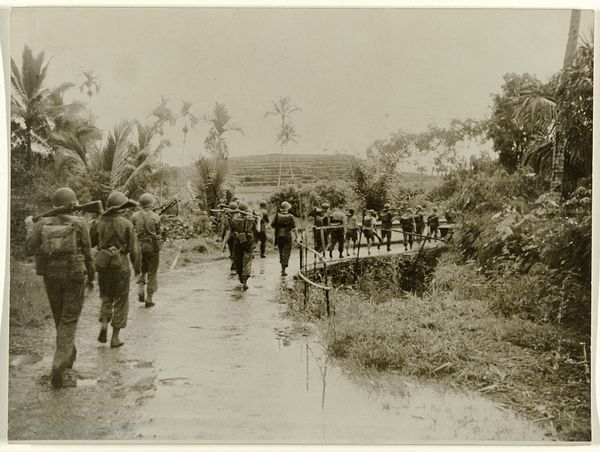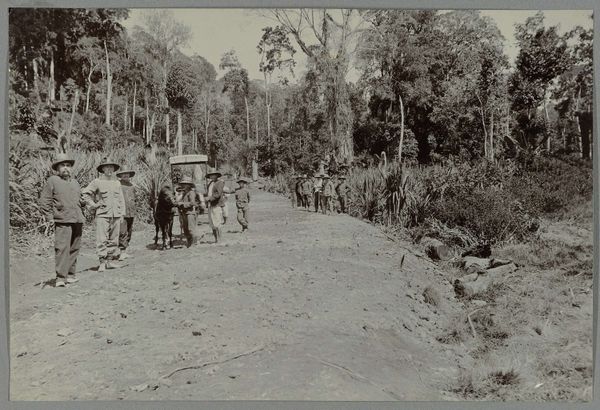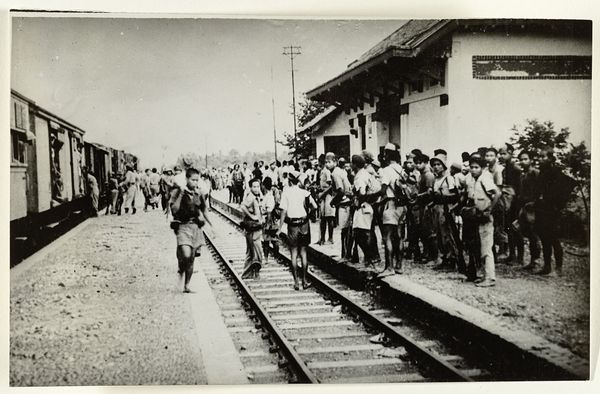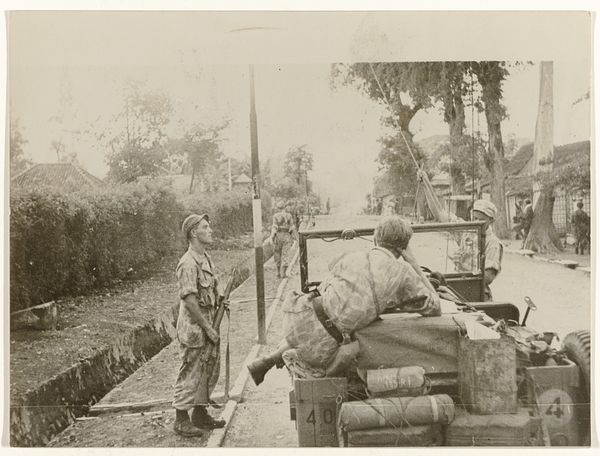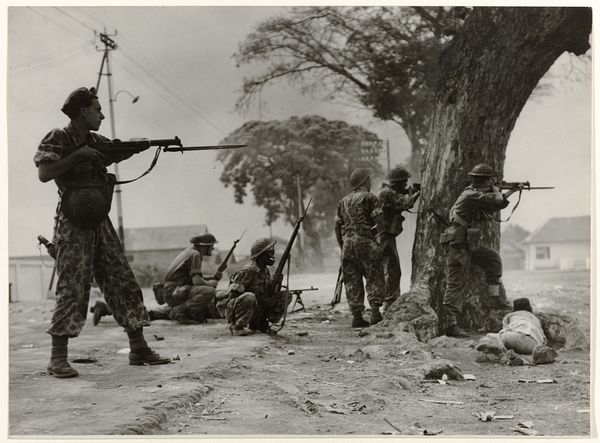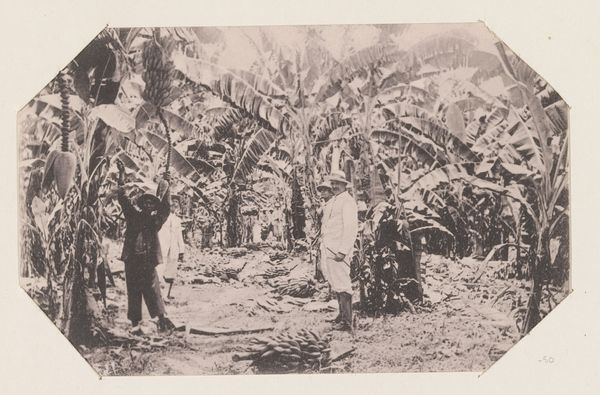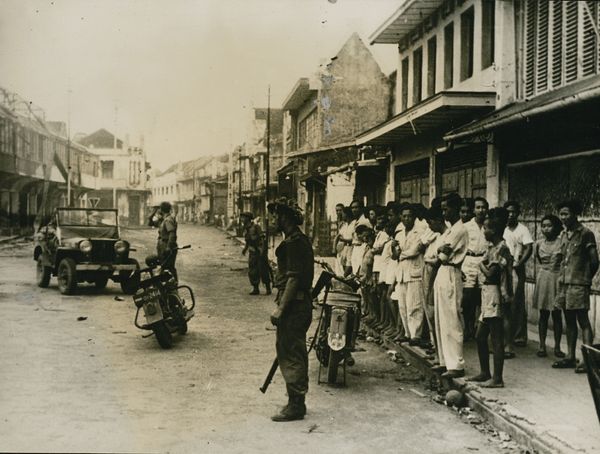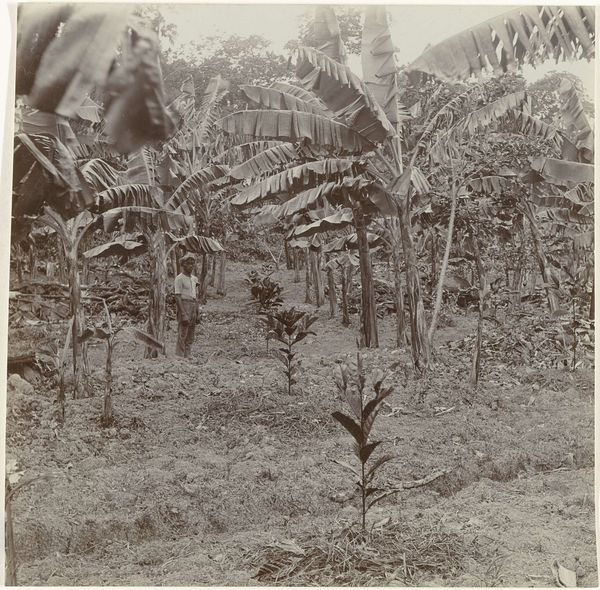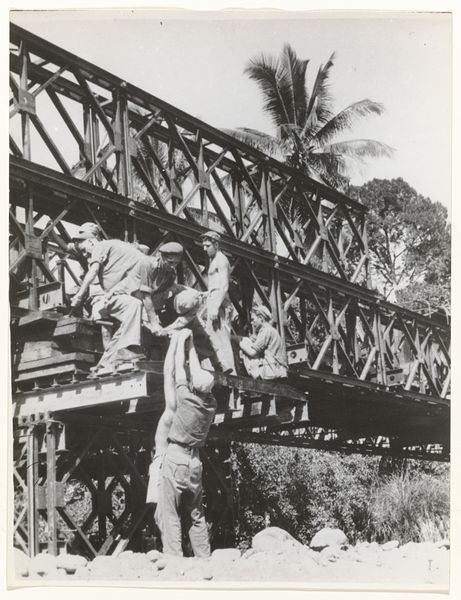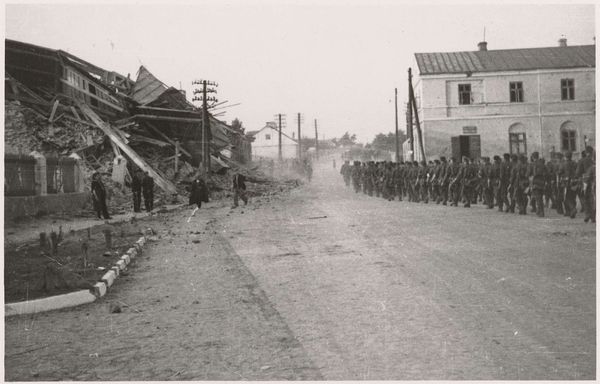
photography, gelatin-silver-print
#
portrait
#
landscape
#
photography
#
photojournalism
#
gelatin-silver-print
Dimensions: height 17 cm, width 24 cm
Copyright: Rijks Museum: Open Domain
Curator: This gelatin silver print, likely from 1949, is titled "Opmars naar Solo." The photographers are credited to ANP. Immediately, the weight of it strikes me. These men, the road… it feels like exhaustion captured in grayscale. Editor: The process and its inherent limitations contribute a specific narrative layer here. Gelatin silver prints became widely accessible precisely due to industrialization. We see photographic techniques here directly linked to its period, thus its wider dissemination to a broader audience became a powerful visual tool in shaping public opinion around this conflict. Curator: Absolutely. And the choice to distribute an image like this... consider the cultural landscape, what message they wanted to convey about the Dutch efforts. I can't help but see how the staged feeling challenges traditional associations of photography. It looks posed in the midst of war, but I also recognize the intent in shaping public perception of military control. Editor: Indeed, what's fascinating to me is the raw physicality presented. These are real supplies and laboring bodies present within what are undeniably difficult terrain circumstances and situations, and the photo offers visual testimony of them all as raw elements. The men carry tangible rifles, their packs hang heavy. Curator: I agree, the reality seems somewhat manufactured, or at the very least filtered. The setting almost seems staged – the truck on the bridge, the thatched buildings, are presented to the audience like backdrops for a Western stage play. But also it allows consideration regarding what aspects about colonial operations are being showcased and also importantly, what is deliberately omitted to generate certain opinions for targeted European communities. Editor: You raise a good point there, as that kind of manufacturing and staging of events leads me towards ideas related to labor—all that it involves for those involved—that we are shown directly working within a framework created according to specific needs that in some way supports larger commercial distribution, creating a layered experience overall. Curator: Looking closer, I agree entirely. It is an important reminder how photojournalism acts both as a historical record but is also framed deliberately for public view. Editor: Absolutely. Studying how material conditions affected photography makes us see art differently than what history typically records in textbooks. Curator: Examining it this way offers vital context in terms of history and its production. Editor: It also grants greater appreciation, because seeing photography presented is quite separate from truly understanding both labor that goes behind it and what kind of material it took originally too.
Comments
No comments
Be the first to comment and join the conversation on the ultimate creative platform.
